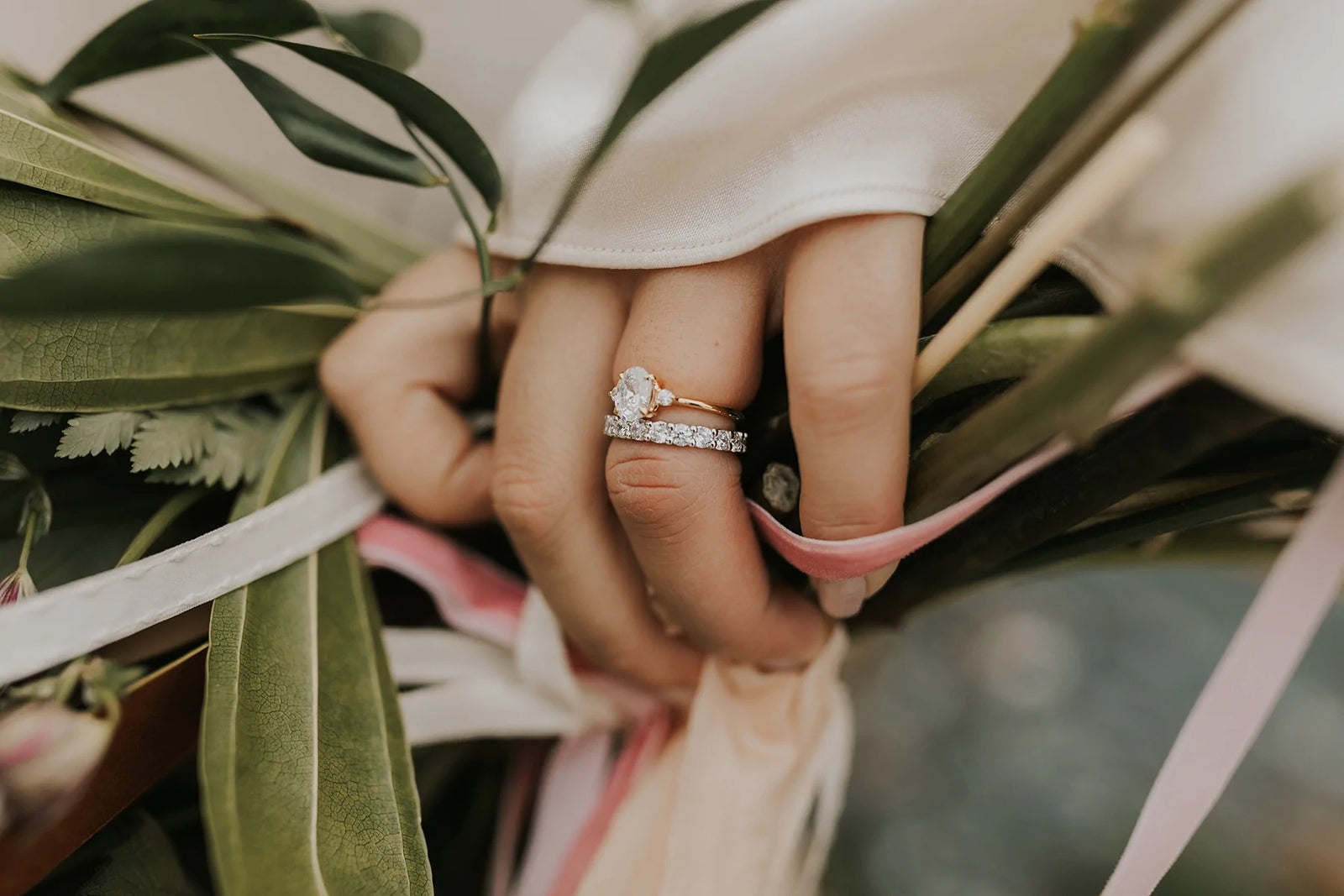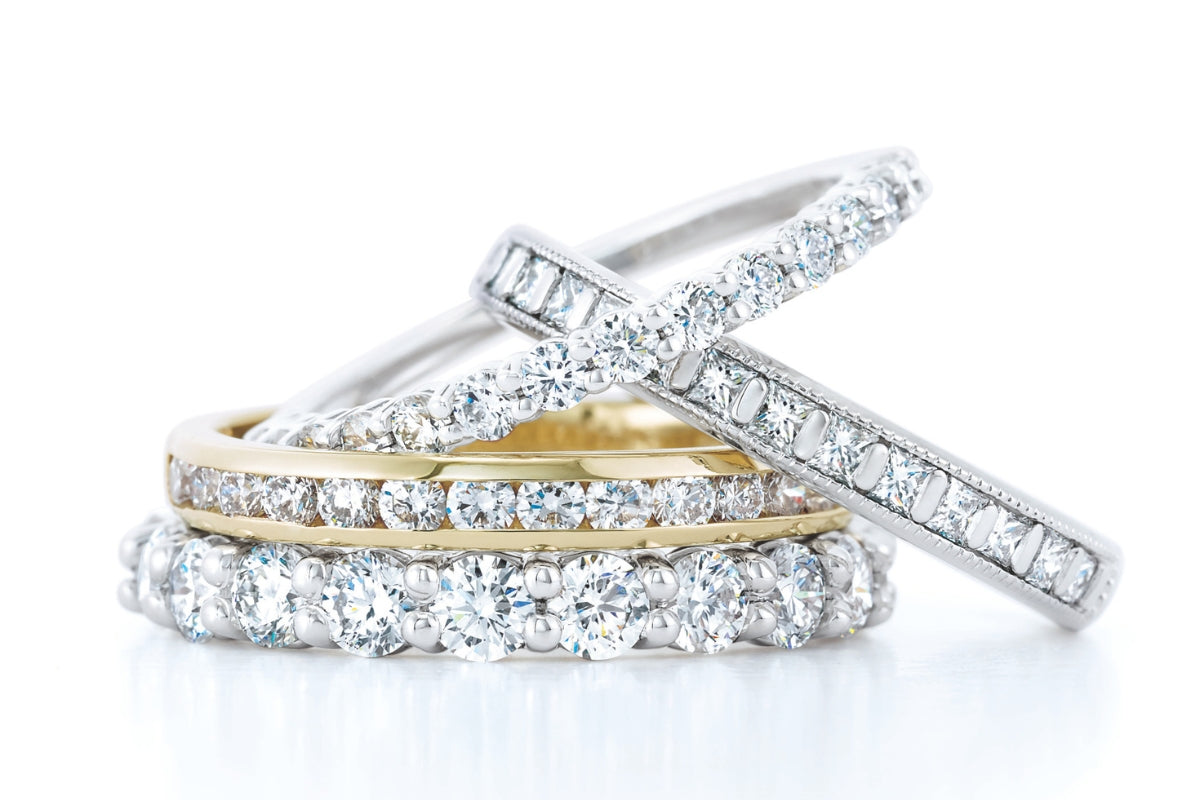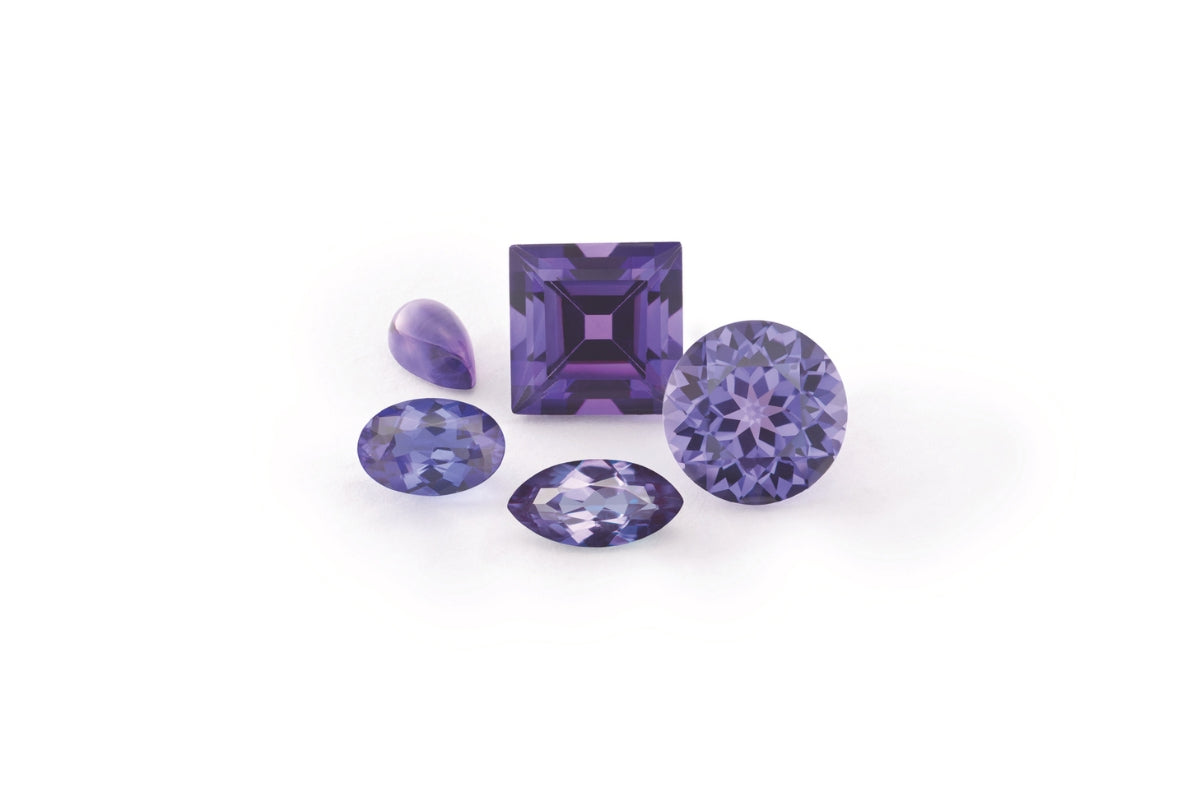Something that often doesn’t get enough attention in the world of fine jewelry is how the piece fits on its intended body part. Typically, necklaces, bracelets, and earrings have a broad or “universal” fitment strategy in that there’s little variation and generally no need to take into account an exact fitment. This certainly helps explain why those types of jewelry above are often gifted and versatile pieces of jewelry. Furthermore, those specific pieces of jewelry are (for the most part) protected from the daily “wear and tear” associated with living ones daily life.
On the other hand (no pun intended), rings are among the most personal and intimate pieces of fine jewelry that we interact with. Just think about how often your hands come into contact with objects throughout the day. Introducing a piece of precious metal adorned with diamonds or gemstones further complicates the matter and reinforces the necessity to really understand fitment. This blog post won’t focus on care or maintenance, as we’ve discussed this in a blog post you can read by clickinghere.Thus, taking the time to have your finger professionally sized will certainly alleviate the potential for wearing an endlessly “lopsided” engagement ring or a wedding band that keeps moving on your finger and causes you concern on a daily basis of the possibility of it falling off.
Sizing a finger requires both experience and a level of precision when conveying the desired fitment on one's finger. Sure, plastic ring sizers or similar workarounds exist and do offer an insight (usually within half a finger size), but aren’t exact and don’t instill the confidence one receives when having certainty and a conversation with a professional about it. Those who have worn rings certainly know what it feels like to wear a “fashion” ring that has a standard “whole” size and never quite fits perfectly. You don’t want to be concerned about your ring sliding off everytime you wash and dry your hands, right?

Many times, an engagement ring or wedding band is the first introduction our clients receive into the world of fine jewelry. Because of this, it’s certainly normal to feel a bit apprehensive about how a ring can or should fit. For example, most people don’t want to risk wearing a slightly loose or overly snug ring as both create unintended consequences. Ring fitment is all about awareness of the ring on your finger. While doing a routine task like washing or drying your hands, a slightly loose ring may end up sliding off your finger due in part to you not being familiar with its weight or “heft” on your finger. Conversely, an overly snug ring may physically bother you by restricting your fingers' blood flow or cause slight irritation or possibly pain in the daily act of removing the ring off of your finger.
Finger sizes for rings typically come in full, half, and occasionally quarter sizes. An example of each would be 7.00, 7.50, and right in between at 7.25. Depending on how high you start when trying on ring sizers, as you progress down towards your finger size, you’ll notice that a handful of sizes “fit” you, but just not perfectly. For example, your finger size may be 7.00, so if first you try on a 7.75, it may “fit” but just not the way you want or expect. The opposite scenario is typically not as true since it’s pretty black and white if a ring fits or will be too tight to even attempt fitting on your finger. Sidenote, if you go into a handful of jewelry stores, depending on the store’s sizing system, sizing increments, methodology, and experience, you may end up with a handful of size approximations or suggestions. I typically tell our clients that if we didn’t size you or your significant other's finger, then it most likely won’t be a “perfect” fitment. In fact, it’s rare, but even when we have the opportunity to size our clients fingers, sometimes external factors like time of day (morning vs. afternoon) or time of year (summer vs. winter) can affect one's finger size. Don’t be discouraged though, all this further reinforces why it’s important to take the finger sizing seriously and leave as little to chance as possible.
Let’s focus on engagement rings for a moment. In the world of fine jewelry, it’s very possible that engagement rings are among the most expensive pieces of fine jewelry one takes ownership of. Meaning the risks of loss or damage has higher financial consequences. All the more reason why fitment is key! Engagement rings tend to feature larger center stones like diamonds, colored gemstones, or moissanite. Not only are these stones typically larger than the rest, but they’re also secured by larger prongs which hold the stone in place. Larger prongs mean a bit more precious metals, and if you know anything about precious metals, you’ll know that they’re quite dense compared to other metals. Also, center stones are intentionally elevated to maximize light interaction, and can sometimes be flanked by stones immediately to the left or right (think three-stone), or can circle the entire circumference (think halo). Due to these sorts of stylistic ring-to-ring variations, engagement rings of all types end up being slightly “top heavy” compared to other fashion inspired rings or even a lower profile band with no proportionally larger center stones (think wedding bands). If the engagement ring doesn’t fit quite right, then it’ll tend to appear “lopsided” meaning it’s constantly in a shifting motion on the finger and rarely, if ever, are they straight and upright. Don’t get me wrong, even a perfect finger size fitment won’t alleviate the potential for “lopsidedness,” but it will certainly help in minimizing the potential for the side-to-side rotation of engagement rings. If you’ve narrowed down your finger size and would further appreciate minimizing the likelihood of a “lopsided” ring, then clickhereto read about adding a “european shank” to your engagement ring.

Variations in finger sizes aren’t always what they seem. There are many contributing factors when it comes to the reason why your finger size may or may not fluctuate. Some of the most common factors are the climate or diet. Summer months in the midwest tend to be hot and humid. The humidity can cause fingers to swell. In the winter months, especially in the midwest, when temperatures drop, fingers end up being the smallest at that time during the year. Above and beyond the climate, one's diet and water intake can affect the size of your finger. Lastly, you may also notice that throughout certain times of the day, especially in the mornings that your finger may be at its largest or “puffiest.”
It’s not advisable to guess your finger size, especially someone else's. Many times we’ve been either asked or informed that a desired finger size was derived by means of measuring their significant other's finger with an at home ring sizing kit, measuring tape, a millimeter gauge, or similar tactics and though the accuracy seems legitimate, there are variations in all sizing systems. The hardest part of the ring sizing process is in the actual motions of putting the ring on and taking it off when wearing a ring and how that feels is equally as important as the actual equivalent diameter of the finger size. In fact, the amount of “resistance” is pivotal to understanding one’s finger size. There are many nuances to take into consideration like removal speed, how straight the finger is, if there’s an enlarged bone, or even a medical condition like arthritis to take into account. Some people just don’t like the way a ring makes their finger look. Most importantly, the preference a person has for looseness or tightness will vary person-to-person. Lastly, depending on the style of the ring, how to remove the ring off also plays into how confident you are about it’s fitment. Sometimes because you’ve worn a ring on the same finger of the other hand, you may think that you know the finger size of both hands. This simply isn’t always the case. In fact, most of the time, the same ring will fit differently on both fingers of each hand so it’s not a good assessment of the other hand's finger size. Using these types of “example” rings as a guide isn’t going to guarantee a perfect fitment. Another reason why an example ring that’s owned and used daily by the same person isn’t ideal for sizing purposes is because of the variations in band width (side-to-side) and thickness (up and off the finger). Proportionality of the ring should be taken into consideration as it does indeed affect finger size. This also holds true when planning for a future wedding band or possibly “stacking” wedding bands on the ame finger next to your engagement ring. The new surface area taken up by the two plus bands should be taken into consideration when choosing the finger size.
So after all of this is taken into consideration, how should an engagement ring or wedding band fit? The ring shouldn’t slide off the finger, nor should it come off withlittleresistance. Key word ismoderateresistance, which may mean an intentional “wiggle” to remove the ring. Conversely, the ring should not require a hard struggle to remove. If you can feel your heartbeat, then you know the ring is too tight. Quite simply it should fit comfortably snug with a moderate amount of resistance required to remove the ring.



